History
The American Bulldog is a fascinating breed that holds a unique place in American history and culture. In this exploration of the topic, we will delve into the history of the American Bulldog, its origins, development, and its various roles throughout history. Additionally, we will touch on related topics such as breed characteristics, controversies, and the breed’s enduring popularity.
Origins of the American Bulldog
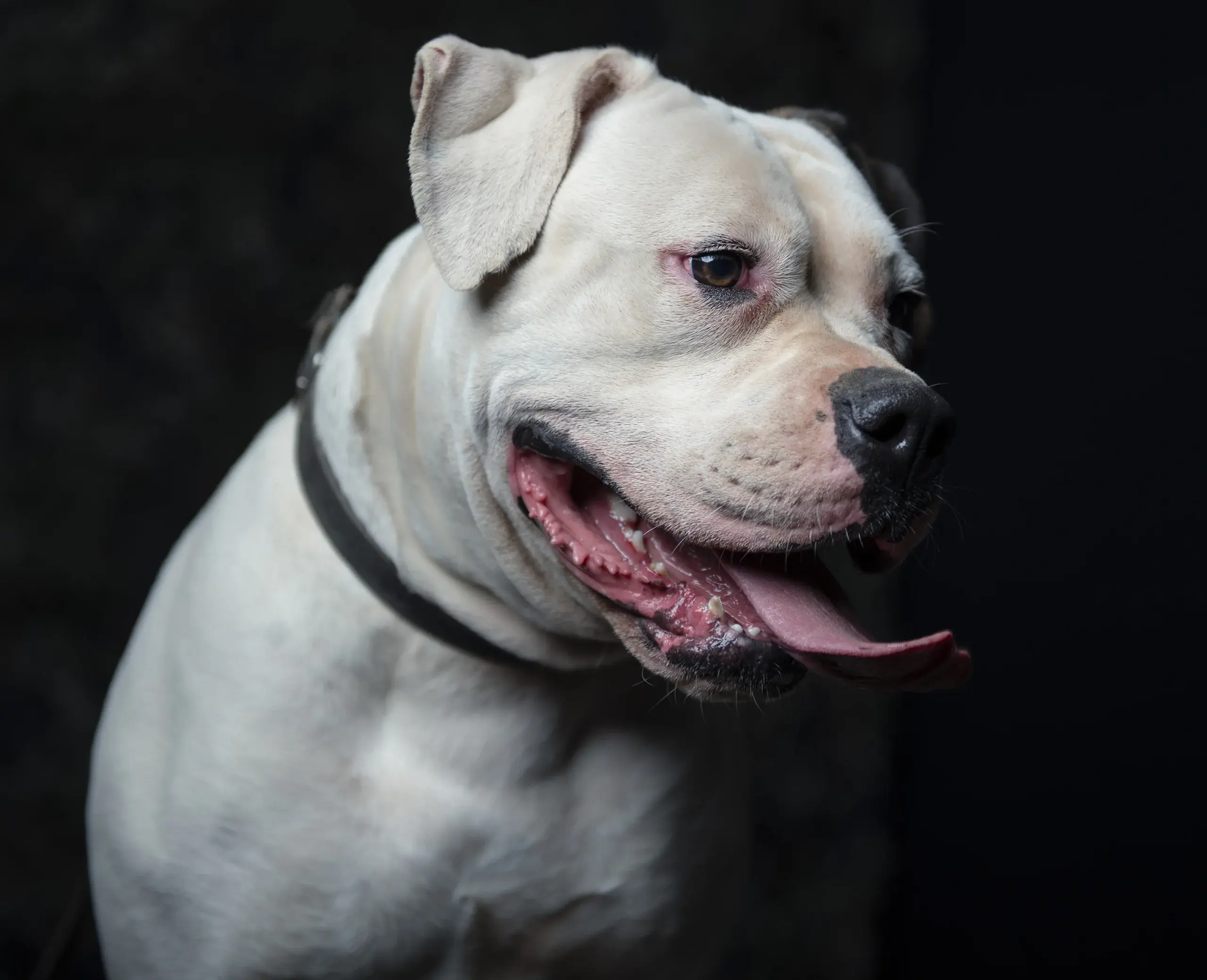
The history of the American Bulldog is deeply intertwined with the history of bulldogs in general. Bulldogs, as a breed, have their roots in England. The term “bulldog” is thought to have been coined in the 16th century, referring to the breed’s historical role in bull-baiting. These early bulldogs were fierce and powerful dogs, known for their tenacity and courage in the brutal sport of bull-baiting.
Colonial America: The Bulldog’s Arrival
The American Bulldog’s journey to America began during the colonial period when British immigrants brought their bulldogs with them. These dogs played a crucial role in early American society as working dogs on farms and homesteads. They were valued for their versatility, serving as protectors of livestock, hunters of small game, and loyal companions to their owners.
The American Bulldog’s Role in the Civil War
During the American Civil War, American Bulldogs, along with other breeds, were conscripted into service as war dogs. Their strength and bravery made them well-suited for various roles, such as guarding military installations and providing companionship and morale support to soldiers on both sides of the conflict.
The Decline and Resurgence
After the Civil War, the American Bulldog faced a period of decline as their traditional roles in agriculture and hunting diminished. However, pockets of enthusiasts and breeders continued to maintain the breed, ensuring its survival. These dedicated individuals played a crucial role in preserving the American Bulldog’s genetic lineage.
The American Bulldog Standard
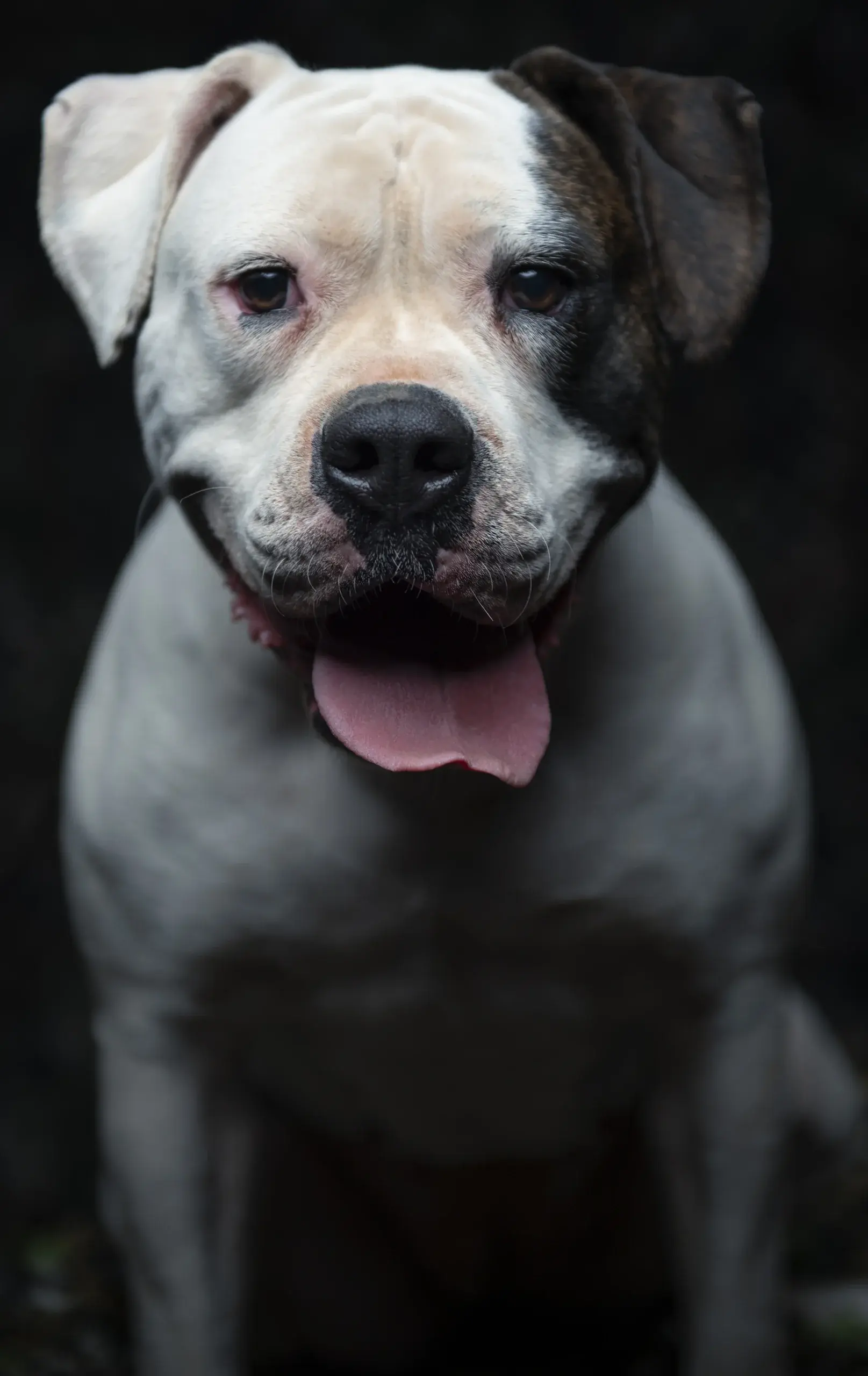
In 1904, the American Bulldog was recognized by the American Kennel Club (AKC). The AKC established breed standards, defining the breed’s appearance and temperament. The American Bulldog is known for its muscular build, distinctive broad head, and characteristic “butterfly” nose. Temperamentally, they are described as loyal, protective, and confident, making them excellent family pets when properly socialized and trained.
Controversies Surrounding the Breed
The American Bulldog, like many dog breeds, has not been without controversy. One of the most significant issues relates to breed-specific legislation (BSL) in various jurisdictions. BSL targets specific breeds, including the American Bulldog, due to concerns about their potential for aggression. Advocates argue that breed-specific legislation is discriminatory and that a dog’s behavior should be evaluated on an individual basis rather than being judged solely based on breed.
Modern Roles of the American Bulldog
In contemporary America, American Bulldogs have diversified their roles. While some still work on farms and ranches as protectors and herders, others participate in dog sports such as obedience, agility, and weight pulling. Additionally, their loyal and protective nature makes them excellent service and therapy dogs, providing emotional support to those in need.
The American Bulldog in Popular Culture
The American Bulldog has left its paw prints on popular culture. They have appeared in various films, TV shows, and advertisements, often cast in roles that highlight their strength and loyalty. This exposure in the media has contributed to their enduring popularity among dog enthusiasts.
American Bulldogs Size
- Average American Bulldog Size: The size of an American Bulldog can vary significantly depending on factors such as gender, genetics, and lineage. On average, male American Bulldogs stand 22 to 27 inches (56 to 68 cm) tall at the shoulder, while females are slightly smaller, typically ranging from 20 to 25 inches (51 to 63 cm) in height. This height measurement is often referred to as the dog’s “withers,” which is the highest point of the shoulder blades.
In terms of weight, male American Bulldogs usually weigh between 75 to 125 pounds (34 to 57 kg), while females tend to be somewhat lighter, with a weight range of 60 to 100 pounds (27 to 45 kg). These figures represent a general guideline, and individual dogs may fall outside of these ranges.

- Growth Stages: Like all dogs, American Bulldogs go through various growth stages as they develop from puppies to adults. It’s essential to monitor their size and weight during these stages to ensure they are growing correctly and maintaining a healthy lifestyle.
- Puppy Stage: American Bulldog puppies grow rapidly during their first few months of life. They typically start out small and then experience a significant growth spurt. By the time they reach six months of age, they are already close to their adult height, although they may continue to fill out in terms of muscle and weight for another year or so.
- Adolescent Stage: Around one year of age, American Bulldogs enter the adolescent stage. During this period, they continue to gain muscle and weight, and their bodies start to take on a more mature appearance. Owners should ensure they receive a balanced diet and regular exercise during this stage to support healthy growth.
- Adult Stage: American Bulldogs are considered fully grown at around 18 to 24 months of age. By this time, they should have reached their adult height and weight, which falls within the ranges mentioned earlier. Maintaining an appropriate diet and exercise routine during adulthood is crucial to keep them at a healthy size.
- Variations in Size: While there are general guidelines for American Bulldog size, there can be considerable variation within the breed. This variation can be attributed to several factors:
- Genetics: Genetic factors play a significant role in a dog’s size. Dogs from certain bloodlines may be larger or smaller than average.
- Gender: As mentioned earlier, males tend to be larger than females. This difference in size can be quite noticeable.
- Age: The age of the dog also affects its size. Puppies are much smaller than adult American Bulldogs, and older dogs may lose some muscle mass and weight as they age.
- Diet and Exercise: Nutrition and exercise play a crucial role in a dog’s size and overall health. Dogs that receive proper nutrition and regular exercise are more likely to reach their full potential size.
- American Bulldog Size vs. Other Bulldog Breeds: American Bulldogs are often compared to other bulldog breeds, such as the English Bulldog and the French Bulldog. These comparisons can be helpful in understanding the unique size characteristics of the American Bulldog.
- American Bulldog vs. English Bulldog: The American Bulldog is notably larger than the English Bulldog. English Bulldogs are shorter and stockier, with an average height of 12 to 16 inches (30 to 41 cm) and a weight range of 40 to 50 pounds (18 to 23 kg). In contrast, the American Bulldog’s larger size makes it a more robust and agile breed.
- American Bulldog vs. French Bulldog: French Bulldogs are considerably smaller than American Bulldogs. French Bulldogs typically stand around 11 to 12 inches (28 to 31 cm) tall and weigh between 16 to 28 pounds (7 to 13 kg). Their smaller size makes them well-suited for apartment living, while American Bulldogs require more space and exercise.
- Size and Activity Level: The American Bulldog’s size also has a direct impact on its activity level and exercise requirements. Understanding this relationship is crucial for providing a fulfilling and healthy lifestyle for your dog.
- Activity Level: American Bulldogs are moderately active dogs. They enjoy regular walks, playtime, and exercise but are not as high-energy as some other breeds. Owners should ensure they get daily exercise to prevent weight gain and maintain muscle tone.
- Exercise Requirements: American Bulldogs need a minimum of 30 to 60 minutes of exercise per day. This can include walks, playtime, and activities that engage both their body and mind. They also benefit from occasional high-intensity exercise to keep them fit and agile.
Nutrition and Diets
Nutritional Requirements of American Bulldogs
American Bulldogs are a medium to large breed, known for their muscular build and active lifestyle. To ensure they thrive, it is crucial to understand their nutritional needs:
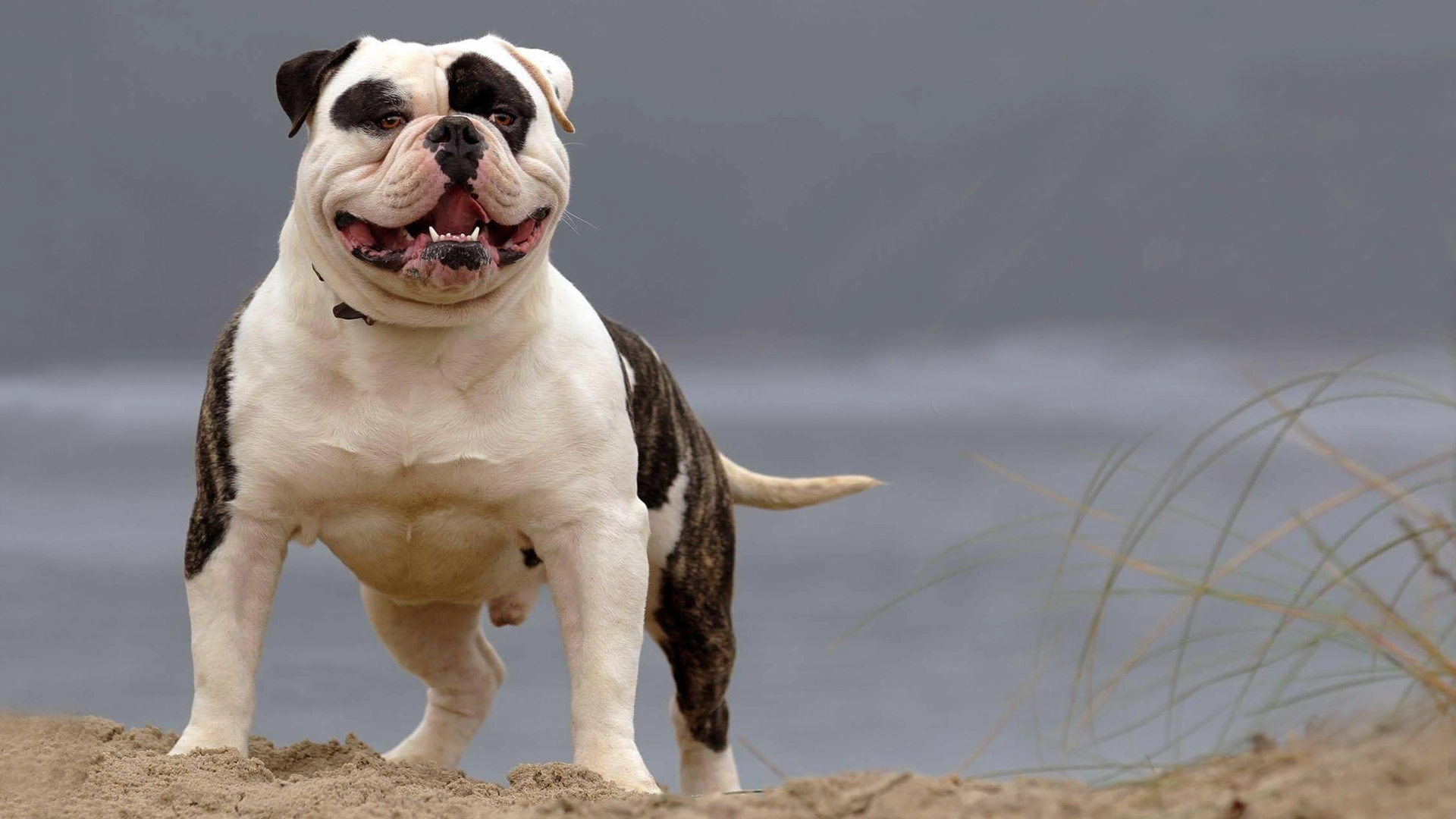
- Protein: Protein is the cornerstone of a dog’s diet, especially for a breed as active and muscular as the American Bulldog. Quality animal-based protein sources, such as chicken, turkey, beef, and fish, should make up a significant portion of their diet. Aim for a minimum of 18-22% protein content in their food.
- Fat: Fat is a dense source of energy and supports various bodily functions. American Bulldogs typically require about 8-12% fat in their diet. Healthy fats like omega-3 fatty acids, found in fish oil, can benefit their skin and coat.
- Carbohydrates: Carbohydrates provide dogs with the energy they need for their daily activities. While dogs are primarily carnivores, they can digest and utilize carbohydrates effectively. High-quality carbohydrates, such as sweet potatoes, brown rice, and oats, should make up around 30-40% of their diet.
- Fiber: Adequate fiber is essential for digestive health. Aim for around 4-5% fiber content in their diet to help prevent constipation and support overall gut health.
- Vitamins and Minerals: American Bulldogs need a balanced array of vitamins and minerals for their overall well-being. Essential nutrients like calcium, phosphorus, vitamin D, and vitamin E are crucial for bone health and immune function.
- Hydration: Proper hydration is often overlooked but vital. Always ensure that fresh, clean water is readily available to your American Bulldog. They need it to regulate body temperature and support digestion.
Common Dietary Issues in American Bulldogs
- Food Allergies: Just like any other breed, American Bulldogs can develop food allergies. Common allergens include beef, chicken, wheat, and soy. If your dog displays symptoms like itching, gastrointestinal upset, or skin issues, consult with your veterinarian to identify potential food allergies and adjust their diet accordingly.
- Obesity: American Bulldogs have a tendency to gain weight if not fed and exercised appropriately. Obesity can lead to various health problems, including joint issues and heart disease. To prevent obesity, monitor their food intake, and ensure they get regular exercise.
- Hip Dysplasia: American Bulldogs are prone to hip dysplasia, a condition where the hip joint doesn’t develop properly. A well-balanced diet that supports joint health is crucial. Look for dog food formulas containing glucosamine and chondroitin sulfate, which can help maintain healthy joints.
Creating a Nutritional Diet Plan
To provide your American Bulldog with the best nutrition, consider the following steps:

- Consult Your Veterinarian: Before making any significant changes to your dog’s diet, consult with a veterinarian. They can assess your dog’s specific needs and help you tailor a diet plan accordingly.
- Choose High-Quality Dog Food: Opt for commercial dog food brands that prioritize high-quality ingredients. Look for products that list a meat source as the first ingredient and avoid foods with excessive fillers, artificial additives, or by-products.
- Consider Age and Activity Level: The nutritional requirements of American Bulldogs can vary based on their age and activity level. Puppies, adult dogs, and seniors have different needs, so choose a food that suits their life stage.
- Portion Control: Avoid overfeeding your American Bulldog, as excess weight can lead to health problems. Follow the recommended feeding guidelines on the dog food label and adjust portions based on your dog’s individual needs.
- Monitor Your Dog’s Health: Keep an eye on your dog’s weight, energy levels, and overall health. Adjust their diet as needed to maintain a healthy body condition.
- Regular Exercise: Alongside a balanced diet, regular exercise is crucial for maintaining your American Bulldog’s overall health. Engage in activities like brisk walks, playtime, and agility training to keep them active and fit.
Homemade vs. Commercial Diets
While some owners opt for homemade diets, it’s essential to approach this choice with caution. Homemade diets can be beneficial if formulated correctly with guidance from a veterinarian or canine nutritionist. However, they can also be risky if not properly balanced, potentially leading to nutritional deficiencies or excesses.
Commercial dog food brands undergo rigorous testing to ensure they meet nutritional standards. They often provide a convenient and balanced option for dog owners, making them a popular choice for many American Bulldog owners.
Training and Intelligence
American Bulldog Background
Before delving into training and intelligence, it’s important to understand the breed’s background. American Bulldogs have a rich history that can influence their behavior and learning capabilities.
The American Bulldog is a direct descendant of the Old English Bulldog, which was originally bred for bull-baiting and later as a farm dog. Over time, the breed evolved into the American Bulldog we know today. These dogs were bred for their strength and tenacity, making them excellent working dogs on farms and ranches.
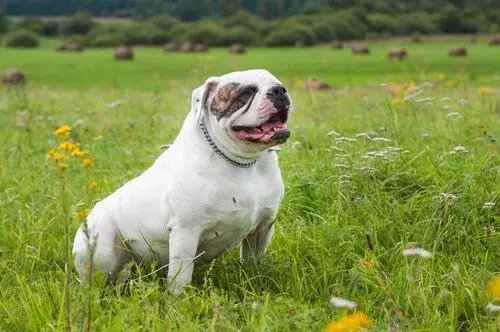
- Intelligence in American Bulldogs
American Bulldogs are often considered to be intelligent dogs. However, their intelligence may manifest differently compared to other breeds. It’s essential to recognize their unique traits and adapt your training methods accordingly.
- Adaptability: American Bulldogs are known for their adaptability. They can quickly learn to adjust to different environments and situations, making them suitable for various roles, from family pets to working dogs.
- Problem-Solving Skills: While they may not be as quick to learn tricks as some other breeds, American Bulldogs excel in problem-solving. They are known for their ability to assess a situation and find a solution, which can be a valuable trait in certain contexts.
- Territorial Instincts: American Bulldogs have strong territorial instincts, which can be attributed to their history as farm dogs. This territoriality can sometimes be misconstrued as stubbornness, but it is a part of their natural protective nature.
- Trainability
Training an American Bulldog requires patience, consistency, and an understanding of their breed-specific traits. Here are some key aspects to consider when training these dogs:
- Positive Reinforcement: American Bulldogs respond well to positive reinforcement techniques. Reward-based training methods, such as treats, praise, and play, can motivate them to learn and obey commands.
- Socialization: Early socialization is crucial for American Bulldogs. Exposing them to various people, animals, and environments from a young age can help reduce any tendencies toward aggression or fearfulness.
- Consistency: American Bulldogs thrive on consistency in training. Use the same commands and expectations consistently to avoid confusion and reinforce good behavior.
- Firm but Gentle Approach: These dogs respond best to a firm but gentle training approach. Harsh punishment or excessive force can lead to resistance and may damage the bond between you and your Bulldog.
- Obedience Training: Obedience training is essential for American Bulldogs, given their protective instincts. Teaching them basic commands like sit, stay, and come is crucial for their safety and the safety of others.
- Challenges in Training
While American Bulldogs are intelligent and trainable, they do come with their unique challenges:
- Stubbornness: American Bulldogs can be somewhat stubborn, especially if they sense inconsistency in your training methods. Patience and persistence are key to overcoming this trait.
- Dominance: Some American Bulldogs may exhibit dominant behavior, particularly with other dogs of the same sex. Proper socialization and training can help mitigate dominance-related issues.
- Strong Prey Drive: Due to their history as farm dogs, American Bulldogs may have a strong prey drive. This means they may be inclined to chase smaller animals. Early training and supervision can help manage this instinct.
- Guarding Instinct: Their guarding instinct can sometimes lead to overprotectiveness. It’s important to teach them to differentiate between real threats and everyday situations.
- Training Tips
To successfully train your American Bulldog, consider these tips:
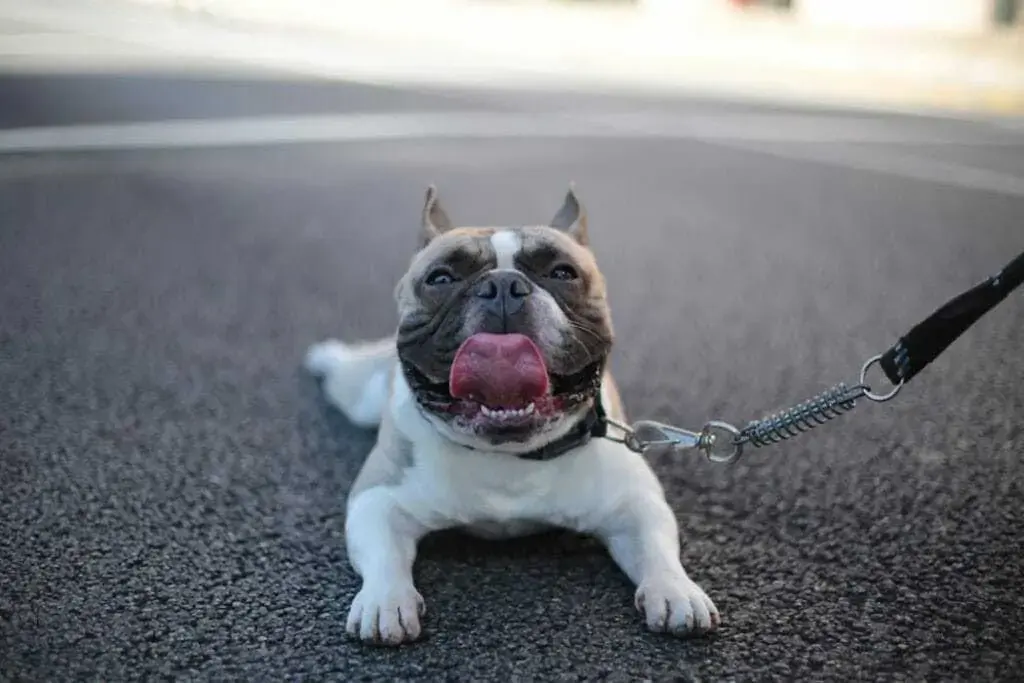
- Start Early: Begin training and socialization as early as possible, ideally when they are puppies. Early exposure to different experiences can shape their behavior positively.
- Consistent Leadership: Establish yourself as the pack leader through consistent and fair leadership. Dogs are more likely to obey when they trust and respect their owners.
- Exercise: Ensure your American Bulldog gets enough exercise to expend their energy. A tired dog is more receptive to training.
- Routine: Stick to a daily routine for feeding, exercise, and training sessions. Routine can help your Bulldog know what to expect and when to expect it.
- Professional Help: If you encounter significant training challenges, consider seeking the assistance of a professional dog trainer who has experience with American Bulldogs.
- Training for Specific Roles
American Bulldogs can excel in various roles, depending on their training and upbringing. Here are a few specific roles where they shine:
- Family Companion: With the right training and socialization, American Bulldogs make loving and loyal family pets. They are known to be excellent with children and can provide protection for the family.
- Guard Dogs: Their protective instincts make them well-suited for guarding properties. Proper training can help them differentiate between real threats and routine activities.
- Working Dogs: American Bulldogs are used in various working roles, such as on farms and ranches. Their strength and adaptability make them valuable assets in these settings.
- Therapy and Service Dogs: Some American Bulldogs are trained as therapy or service dogs. Their calm demeanor and ability to bond with their owners make them suitable for these roles.
Health and Lifespan
Health Considerations:
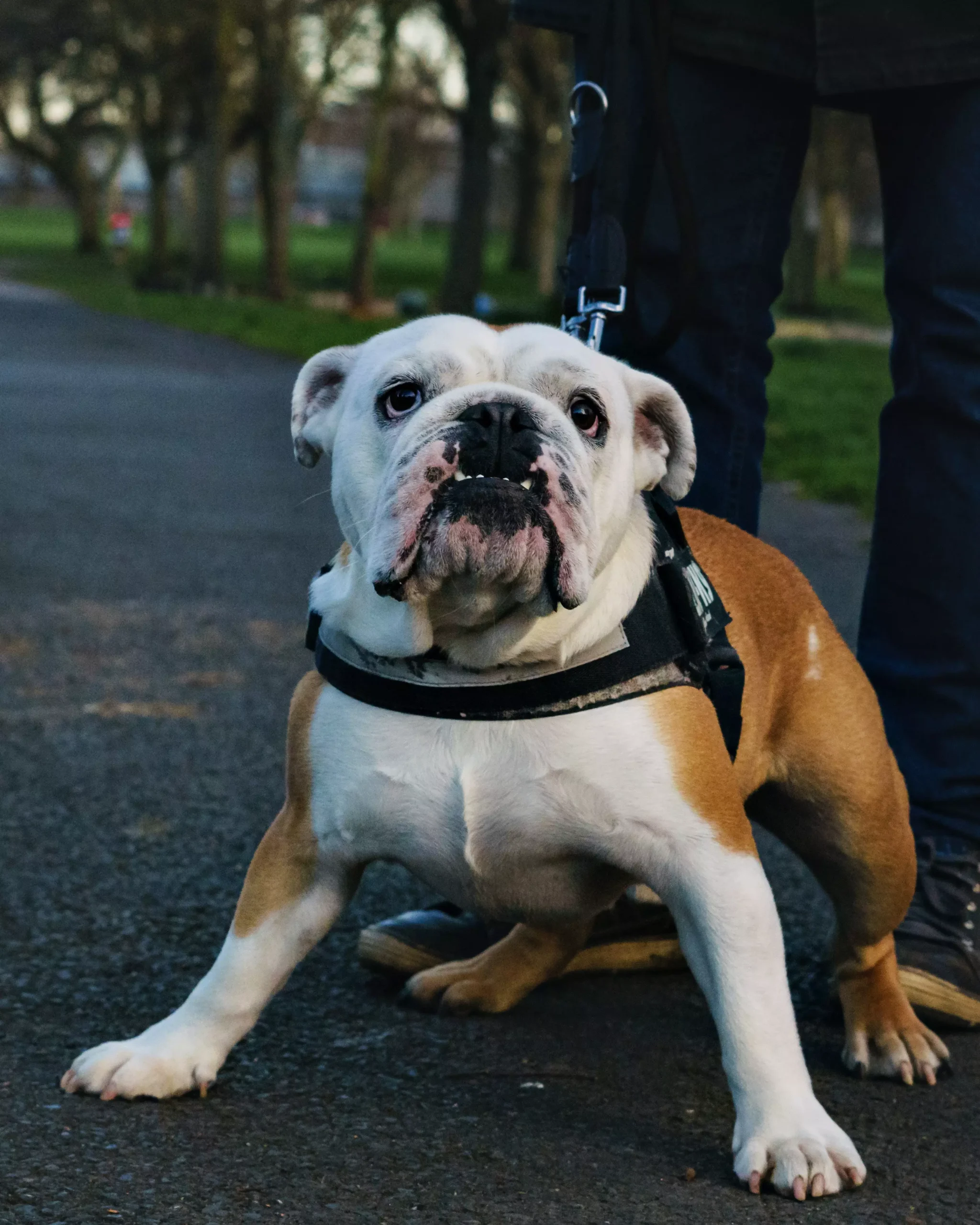
- Hip Dysplasia: American Bulldogs can be prone to hip dysplasia, a genetic condition where the hip joint doesn’t develop properly. This can lead to arthritis and mobility issues. Regular vet check-ups and a balanced diet can help manage this condition.
- Entropion: Entropion is a condition where the eyelids roll inward, causing discomfort and potentially leading to eye problems. It’s important for American Bulldog owners to monitor their dog’s eyes and seek veterinary attention if any issues arise.
- Allergies: Some American Bulldogs may develop allergies to food or environmental factors. Common signs of allergies include itching, skin irritation, and digestive problems. Identifying and eliminating the allergen is key to managing this condition.
- Demodectic Mange: This skin condition is caused by mites and can result in hair loss and skin irritation. While it’s often not serious, severe cases may require veterinary treatment.
- Brachycephalic Syndrome: While not as pronounced in American Bulldogs as in some other breeds, they still have short muzzles, which can make breathing difficult. It’s important to avoid strenuous exercise in hot weather and be cautious of respiratory issues.
- Obesity: American Bulldogs have a tendency to gain weight if not properly exercised and fed. Obesity can lead to various health issues, including joint problems and heart disease. Maintaining a healthy diet and regular exercise are essential.
- Bloat: Bloat, or gastric torsion, is a potentially life-threatening condition where the stomach twists, trapping gas and causing extreme discomfort. American Bulldogs are among the breeds more susceptible to this condition. Feeding smaller, more frequent meals and avoiding vigorous exercise after eating can help reduce the risk.
- Heart Disease: Some American Bulldogs may be prone to heart diseases, such as dilated cardiomyopathy. Routine check-ups with a veterinarian can help detect and manage these conditions early.
- Cancer: Like many other breeds, American Bulldogs can be susceptible to various forms of cancer. Regular veterinary visits and awareness of common cancer symptoms, such as lumps or changes in behavior, can aid in early diagnosis and treatment.
- Ear Infections: Due to their floppy ears, American Bulldogs are prone to ear infections. Regular cleaning and monitoring can help prevent and manage this issue.
Lifespan:
The average lifespan of an American Bulldog typically ranges from 10 to 15 years, with proper care and attention to their health needs. Several factors can influence the lifespan of an American Bulldog:
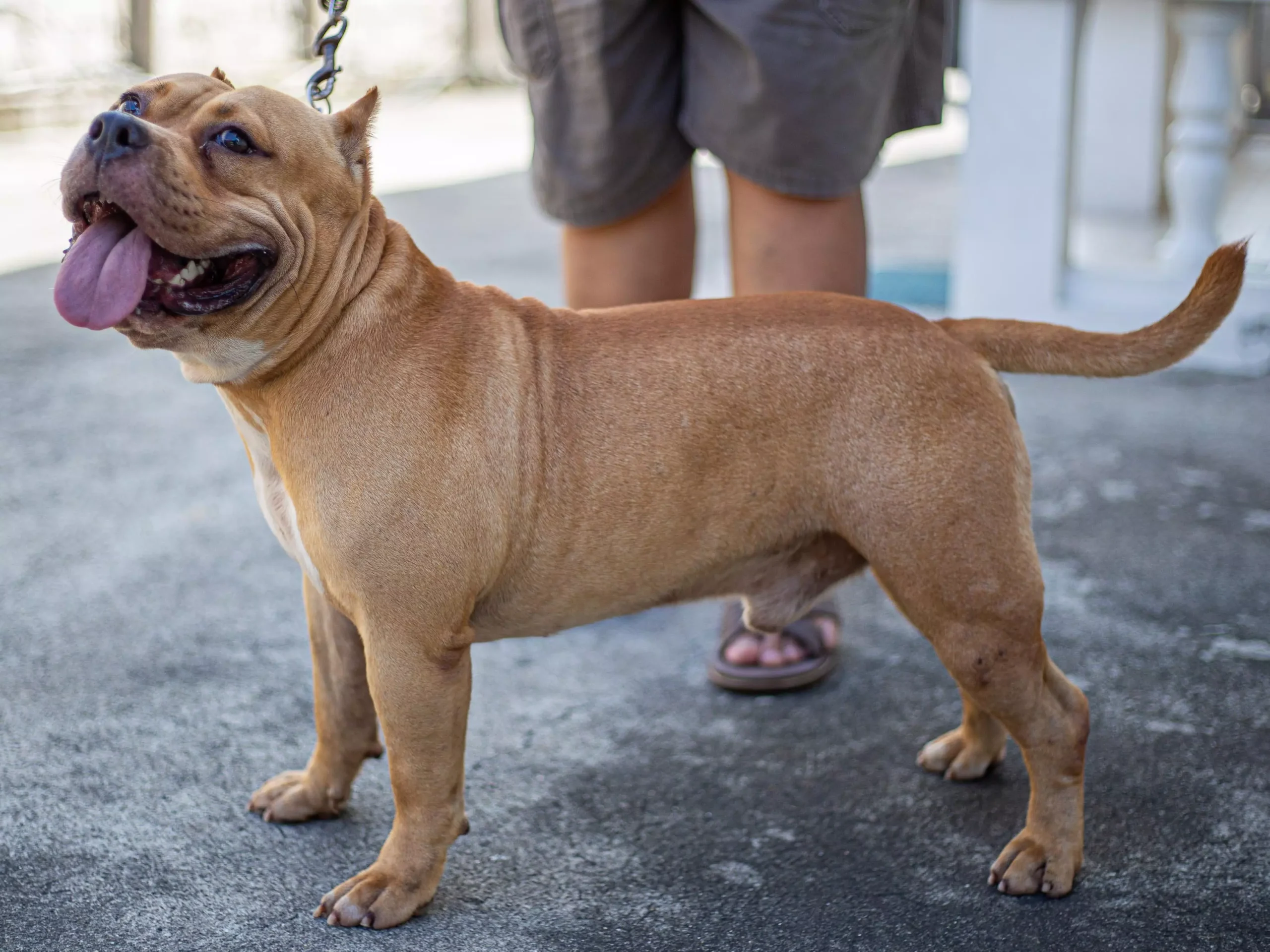
- Genetics: The dog’s genetic makeup plays a significant role in determining its lifespan. Responsible breeders strive to select for healthier genetics, reducing the risk of hereditary health issues.
- Diet: Providing a balanced and nutritious diet is crucial for a longer and healthier life. Avoid overfeeding and maintain an appropriate weight to prevent obesity-related health problems.
- Exercise: Regular exercise is essential to keep an American Bulldog physically and mentally fit. Adequate exercise can help prevent obesity, promote joint health, and reduce behavioral issues.
- Healthcare: Routine veterinary check-ups, vaccinations, and preventive care are vital for maintaining good health. Early detection and treatment of health issues can significantly extend a dog’s lifespan.
- Socialization and Mental Stimulation: American Bulldogs thrive on social interaction and mental stimulation. Ensuring they receive proper training and socialization can contribute to their overall well-being and happiness.
- Neutering/Spaying: Spaying or neutering can have an impact on an American Bulldog’s lifespan. It can reduce the risk of certain health issues and behavioral problems.
- Environment: Providing a safe and comfortable living environment is essential for the well-being of an American Bulldog. Protect them from extreme weather conditions and provide adequate shelter.
- Stress Management: Minimizing stressors in a dog’s life, such as loud noises or aggressive encounters with other animals, can help promote a longer and happier life.
- Quality Breeding: Choosing a reputable breeder who prioritizes the health and well-being of the dogs can have a significant impact on the longevity and overall health of an American Bulldog.
Conclusion
In conclusion, the American Bulldog is a remarkable breed with a rich history deeply intertwined with the development of North America. Their size, strength, and intelligence make them versatile working dogs and beloved family pets.
Understanding their history helps us appreciate their enduring qualities and adaptability in modern times. Proper care, nutrition, training, and attention to their health are essential to ensure that American Bulldogs live long, happy lives as loyal companions. This breed’s resilience and adaptability are a testament to their enduring place in American culture and hearts.



